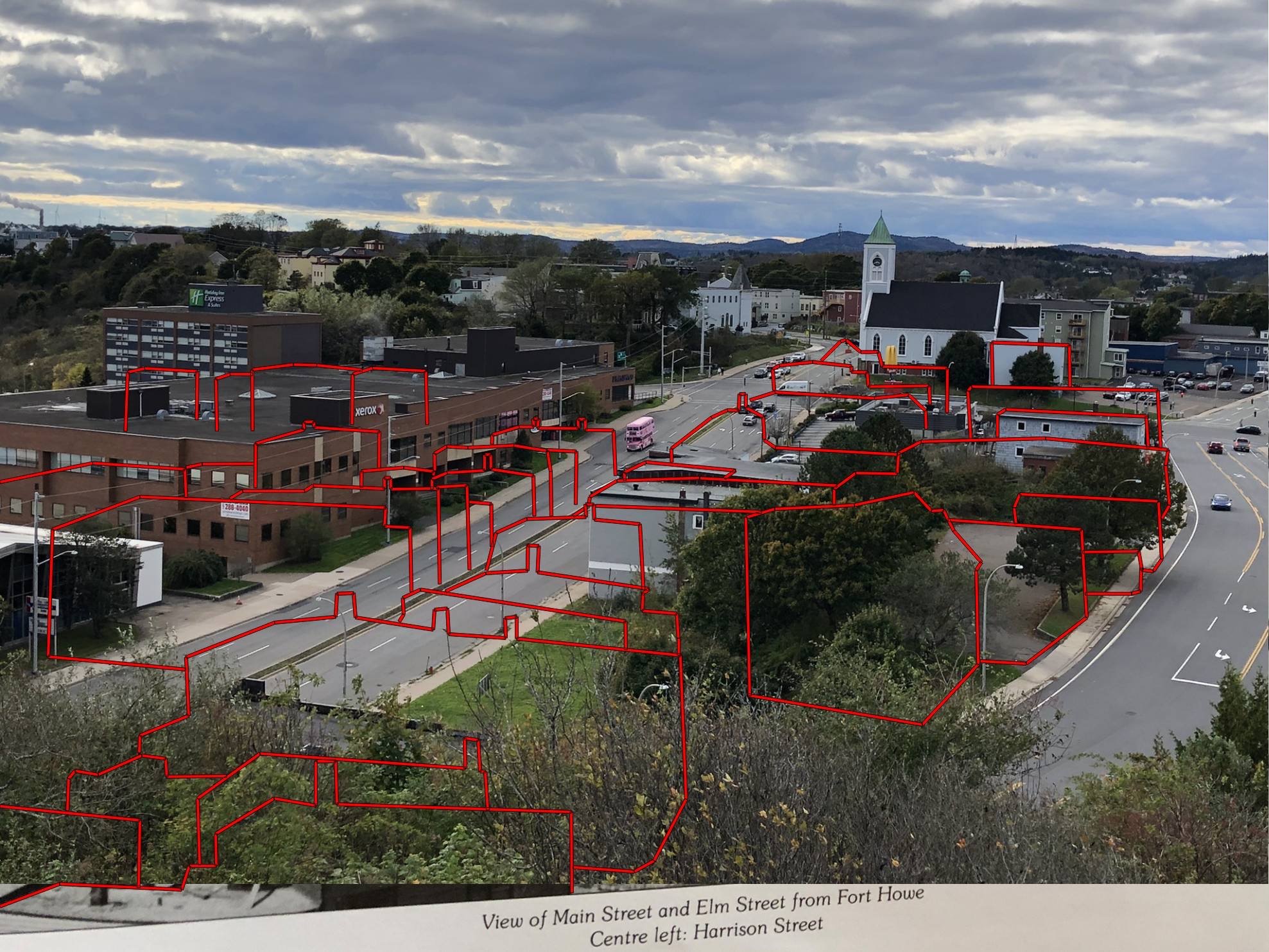It’s a Stroad Now, but What Used To Be There?
You’ve probably seen some version of this book. It’s full of historic, “on this spot” photos from your town or city, and you’ll find it on the local interest shelf at your favorite bookstore, or perhaps at a book fair with an underpaid author dedicated to preserving local history. For Strong Towns member Evan Miller, such a volume became a powerful tool to tell the story of how urban renewal had marred his hometown, and left an inhospitable mess in its wake.
Miller and his fellow Local Conversation members in Saint John, New Brunswick, used historic photos like a guidebook to identify areas of their cities that had undergone radical transformation in the 1960s and 70s. It helped that this book—Urban Renewal Saint John: A City Transformed, compiled by Brenda Peters McDermont—was focused so specifically on the most destructive era. Their work, juxtaposing images from the book with the current built environment, turned into a series of evocative social media posts.
For Miller, who has no formal training in urban planning or transportation, it all began with making connections. “Once I started learning about development patterns, through my interest in Strong Towns, I started to notice things in my city that didn't make sense.” So, Miller went to his local public library and asked for photos and context to help document what he observed.
He was particularly struck by what had happened in the North End of Saint John. He describes what’s there now: “big quintessential brands, you know, like Shoppers Drug Mart, a giant Tiger”—think CVS and K-Mart. Historic photos showed a completely different landscape, with varied housing and commerce and smaller streets. He used them to draw the shapes of previous buildings over photos of grim, pavement-strewn landscapes.
The neighborhood now faces a full range of urban struggles, and Miller chafes at rhetoric that often blames the residents. “The thing that struck me the most was how we went from a place to a non-place. ... You look at the photos and there are shops there. There's life there. It's vibrant. And you look at today, and it's like a hotel with a parking lot and a big building that isn't joined to the street.”
Other photos show the footprint of historic housing in the middle of an existing road that was later enlarged, and all the building stock that stood where lanes and exchanges for Highway 1 were built.
That landscape produced problems that still need fixing. A prominent local cycling advocate was killed last November while riding on a dangerous stretch of Adelaide Street, and the Strong Towns Local Conversation is now trying to engage for a redesign to reduce speeds and enhance pedestrian and cycling safety.
Saint John’s journey was like so many other cities in North America. A large swath of traditional homes and businesses on human-scaled streets was torn down, and expanded roadways and a different style of housing replaced them. As Strong Towns has previously acknowledged, this was often done with good intentions. “When I read the old newspaper articles, they they're so optimistic and they're so excited for the new city … they really thought they were doing something special,” observes Miller.
We now know that they were really replacing the traditional development pattern, which had evolved over thousands of years, with a new 20th-century version that made our neighborhoods more dangerous and less economically productive.
Strong Towns Social Media Coordinator Katy Kelly says this before-and-after juxtaposition can be a highly effective way to share this story with an unfamiliar audience. “These images can be much more powerful than words. Contrasting the past and present show us what has been lost to history, and help us reimagine what can be rebuilt.”
Miller says that was exactly the group’s goal. “It didn't always used to be that way. And isn't always going to be that way. So I want those people to see that post and see their city in a new way.” He says this post has already garnered a lot of local attention and generated outreach from another city in the province and hopes it helps grow the Local Conversation group.
Kelly puts some numbers behind that success. “The response to Strong Towns Saint John’s post on our Instagram speaks for itself: over 5,000 likes and 60 comments, with many people expressing how impactful the imagery is.” She encourages other Local Conversations and advocates to replicate this approach, with these step-by-step instructions:
Find historic photos of Main Street or other recognizable areas.
Use a photo editor to trace lines over the buildings.
Copy and paste those lines onto a modern-day photo from the same angle, showing the traces of the “ghost” buildings. (Taking these photos could be a fun afternoon event with your Local Conversation group!)
Order and assemble to share.
If you do create a photo series showing urban renewal in your town, send them to us at katy@strongtowns.org. We can help you refine the post, and share it on our platform.














Ben Abramson is a Staff Writer at Strong Towns. In his career as a travel journalist with The Washington Post and USA TODAY, Ben has visited many destinations that show how Americans were once world-class at building appealing, prosperous places at a human scale. He has also seen the worst of the suburban development pattern, and joined Strong Towns because of its unique way of framing the problems we can all see and intuit, and focusing on local, achievable solutions. A native of Washington, DC, Ben lives in Venice, Florida; summers in Atlantic Canada; and loves hiking, biking, kayaking, and beachcombing.